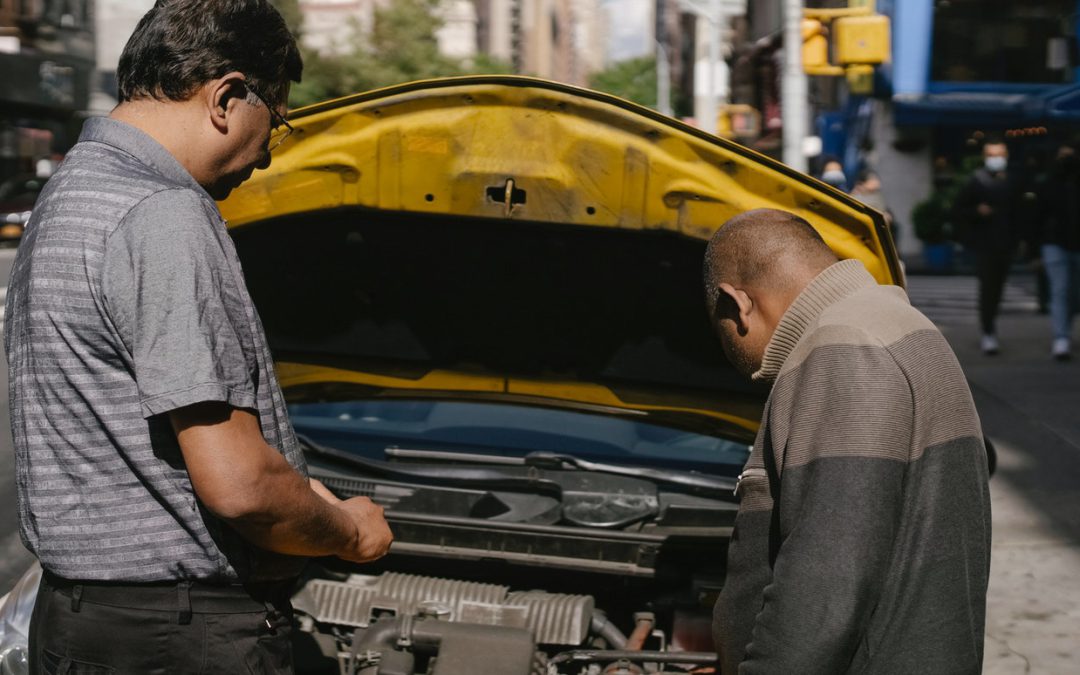Car overheating can be a frustrating and potentially dangerous problem for any driver. Whether you’re on a long road trip or simply running errands around town, an overheating engine can put a damper on your plans and lead to costly repairs if not addressed promptly. In this article, we will explore how to diagnose car overheating issues like a pro, enabling you to identify the problem and take appropriate action.
Understand The Causes Of Overheating
In order to effectively diagnose car overheating, it is crucial to possess a fundamental comprehension of the typical factors that contribute to this issue. Common causes may encompass a defective radiator, a malfunctioning thermostat, a coolant system with leaks, a broken water pump, or a clogged cooling system. Familiarizing yourself with these potential culprits will aid in narrowing down the diagnosis and identifying the underlying root cause. This understanding allows for a more efficient and accurate troubleshooting process, enabling timely repairs and preventing further damage. Remember to prioritize safety and seek professional assistance if needed.
1. Check The Coolant Level
To diagnose an overheating problem, start by checking the coolant level in the radiator or overflow tank. Park your car on a flat surface and let the engine cool down before opening the radiator cap or overflow tank. Low coolant level could signal a system leak or insufficient coolant. Verify that the coolant mixture meets the manufacturer’s specifications and add more if needed. It’s important to maintain the proper coolant level to prevent engine overheating and potential damage. Regularly inspecting the coolant level and ensuring the correct mixture will help keep your vehicle running smoothly and prevent overheating issues on the road.
2. Look For Coolant Leaks
To ensure your vehicle’s optimal performance, it’s essential to be vigilant for coolant leaks. Take a thorough look at both the engine bay and the ground beneath your car, as these areas can reveal signs of coolant leakage. Be on the lookout for puddles or stains accompanied by a distinct sweet smell, as these indicate possible leaks. Pay close attention to the radiator hoses, connections, and the water pump, as they are common culprits for leakage. Consider conducting a pressure test to uncover any concealed leaks within the system. Remember, addressing coolant leaks promptly is of utmost importance as it helps prevent the occurrence of overheating problems and ensures your vehicle’s smooth functioning.
3. Check The Radiator And Cooling Fan
To prevent overheating issues, it is crucial to examine the radiator and cooling fan. Begin by visually assessing the radiator for any indications of harm or obstructions. Look out for bent fins or debris accumulation that could impede the airflow. Moreover, verify that the cooling fan is operating properly. Initiate the engine and let it idle until it reaches the operating temperature; the cooling fan should activate at this stage. If it fails to do so, there might be a problem with either the fan motor or the fan relay. Taking these steps will help identify and address any radiator or cooling fan malfunctions that could lead to overheating problems.
4. Test The Thermostat
Checking the Thermostat is crucial to prevent engine overheating due to coolant flow restriction. Begin by allowing the engine to cool down completely before proceeding. Next, carefully detach the thermostat from the engine. Immerse it in a pot of boiling water and employ a thermometer to track the temperature. The thermostat ought to open within its designated temperature range as the water reaches that level. Should the thermostat fail to open or open prematurely, it is probable that it is defective and necessitates replacement. This diagnostic test assists in identifying potential issues related to the thermostat’s functionality, ensuring proper engine temperature regulation and preventing overheating problems. Swiftly addressing any thermostat problems can save you from costly engine damage and improve the overall performance of your vehicle.
5. Inspect The Water Pump
When inspecting the water pump, it is important to note that its primary function is to circulate coolant throughout the engine. Inadequate coolant flow caused by a malfunctioning water pump can lead to overheating issues. To identify potential problems, keep an eye out for any indications of a leaking water pump, such as coolant stains or visible drips. Additionally, check for any wobbling or play in the pump’s pulley, as this could be a sign of a faulty pump. If any of these symptoms are detected during the inspection, it is highly recommended to replace the water pump with a new one to ensure proper functioning and prevent potential damage from overheating.
6. Check The Cooling System Pressure
Performing a cooling system pressure test is crucial for detecting possible leaks and vulnerabilities in the system. This test involves utilizing a pressure tester to pressurize the cooling system, facilitating a thorough visual examination for any signs of leakage. The rapid decrease in pressure serves as a clear indication of an existing leak that requires immediate attention. It is important to conduct this test when the engine is cold to ensure safety and prevent any potential injuries. By implementing a cooling system pressure test, you can proactively identify and rectify issues before they escalate, thus maintaining the optimal performance and longevity of your vehicle’s cooling system.
7. Inspect The Engine’s Cooling System
When examining the cooling system of an engine, it is crucial to inspect more than just the radiator and water pump. This system comprises various components such as hoses, gaskets, and the thermostat housing, all of which require careful scrutiny for any indications of wear, damage, or leaks. It is essential to assess these parts thoroughly during maintenance. If any components show signs of being worn out, they should be promptly replaced to ensure optimal functioning of the cooling system and prevent potential issues down the line. Keep in mind that regular inspections and timely replacements are vital for maintaining the overall health and efficiency of the engine’s cooling system.
8. Consider The Head Gasket
When it comes to the head gasket, a blown one can have serious consequences such as the mixing of coolant with engine oil, resulting in overheating issues. You can identify a blown head gasket through several symptoms: white smoke emanating from the exhaust, a sweet odor, or a milky residue on the oil dipstick. If you suspect that your vehicle’s head gasket is blown, it is highly recommended to seek assistance from a professional mechanic. They will conduct a comprehensive inspection and carry out the necessary repairs to rectify the problem. It’s crucial not to delay the process to avoid further damage to the engine. Remember, consulting an expert is the best course of action in such cases.
Consult A Professional
When it comes to diagnosing car overheating problems, the aforementioned steps provide a foundation, but it is crucial to acknowledge your own limitations. If you find yourself unable to identify the underlying problem or uncertain about the best course of action, seeking advice from a professional mechanic is highly recommended. These skilled experts possess the necessary knowledge and diagnostic tools to accurately pinpoint the issue at hand. Consulting a professional not only ensures that the problem is properly addressed but also minimizes the risk of further damage to your vehicle. Don’t hesitate to rely on the expertise of a mechanic when faced with overheating troubles that go beyond your own understanding.
Conclusion
In conclusion, diagnosing car overheating issues requires a systematic approach and basic understanding of the cooling system components. By following the steps outlined above, you can identify the root cause of the problem and take appropriate action. Remember, regular maintenance and prompt repairs are key to preventing overheating issues and ensuring your car’s longevity and reliability on the road.
Experience the Difference: Trustworthy Auto Repair for Your Car Running Hot
Tired of impersonal, one-size-fits-all auto repair shops that don’t understand your unique needs? Look no further than autoTECH Blackhawk, your destination for a truly personalized experience. We go beyond the quick fix for your car running hot, taking the time to build a relationship with you and your vehicle.
No matter if you’re seeking to maintain your car’s current condition or add a touch of personal style, we’ve got you covered. Our independent auto repair mechanics team has earned countless satisfied customers’ trust, and we take pride in offering an industry-leading 3-Year/36,000-mile warranty. Rest assured, we only use Original Equipment and manufacturer-recommended products to ensure your car performs at its absolute best.
But at Autotech Blackhawk, we’re not just about fixing cars but building relationships. From teaching your family the basics of car maintenance to providing expert advice on the latest automotive trends, we’re here to be your trusted partner every step of the way.
So why wait? Contact us now to book your appointment, where we prioritize a no-contact, friendly approach. Experience the personalized service that you and your car deserve. By choosing autoTECH Blackhawk, you’re not only supporting local businesses but also putting your trust in us for all your auto repair needs. Thank you for choosing us as your go-to auto repair shop!


